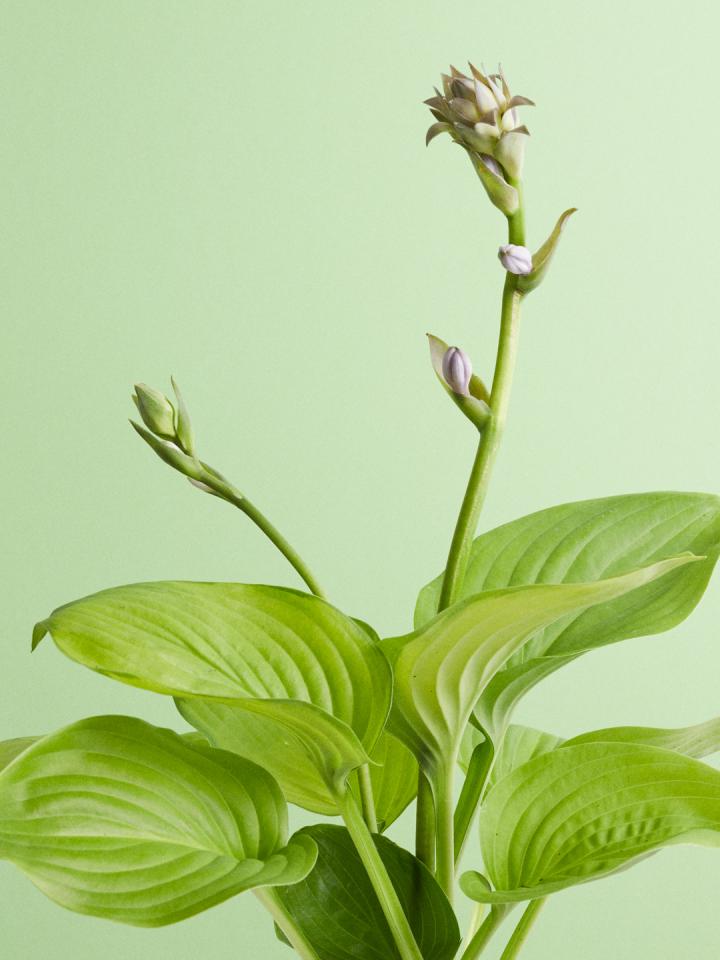COLOURS AND SHAPES
Hosta forms large leaf rosettes that produce beautiful lilac or blue flowers. The number of varieties of Hosta is huge. Plants are bred all over the world resulting in thousands of different kinds. They vary in leaf colour, plant shape, winter hardiness and floridity. Most Hosta are known for their leaves that come in a wide range of colours and leaf patterns, from grey to blue and from yellowish to white. There are also species that have very rich blue or lilac-coloured blooms. The older varieties often have thinner leaves and are less compact. More recent varieties have thicker and more compact leaves, which make them less likely to blow away and less attractive to snails. They also do better in full sun.
symbolism
The German squire Philipp Franz von Siebold became known for his research into Japanese flora. From the Hortus Botanicus in Leiden, he brought forth well-known garden plants such as the Hosta, Hydrangea and Azalea to Europe. The Hosta is named after N. Th. Host, the Finnish doctor of Emperor Francis I of Austria.
ORIGIN
The plant belongs to the family of Asparagaceae, also the home of asparagus. Hosta is native to north-eastern China, but it's also common in Japan. Hosta proved so popular in Europe and America that the plant is one of the most developed perennials, with more than 5,000 different varieties.





